若要檢視本篇的中文版,請按 這裡
One day, Tof went to a lecture by a local dental implant master. I was thinking, since I couldn’t steal any of Dr. Johnny Chang’s dental implant techniques, maybe I could steal some from other masters; and at least I would be able to bluff more about dental implantology to my fans of the blog. The speaker’s techniques were impeccable, both the positioning and the angle of the implant placement were masterfully controlled. His techniques are as good as Dr. Johnny Chang’s. But when he showed us the prostheses, it was hilarious; whether it’s the temporal crowns or the final ones, they were all poorly made. Personally, I don’t have a high standard about this, but I wasn’t expecting him to brag about himself so much when the shapes and colors of the crown were all off.
This master likes to emphasize on the notion of super GP, only focuses on the traits that can make big money; dental implants, orthodontics, and ceramic crowns are all his specialties. But for me, I can only focus on being in a single specialty, because I know concentrating on one realm is hard enough, that’s why I cannot cross over to other specialty.
I enjoy being professional at what I do. That’s why I couldn’t stand it when I meet someone with a self-title of super GP master. If the work he has done like that could be deemed as a masterpiece, then my work would be a world class one, too.
Compared to this super GP master, then Dr. Johnny Chang is more of a nice guy who is willing to refer his patients back to me for prosthesis after implant placement. If not, as a professional prosthodontist, I might be put out of business very soon if I don’t start placing my own implants.
Mmm…,thank you Johnny…..
Ok, let’s focus on the case we have today.
In this case, the position of the tooth is identical to the crowns we made from last article; the patient’s tooth #11 is a failing tooth: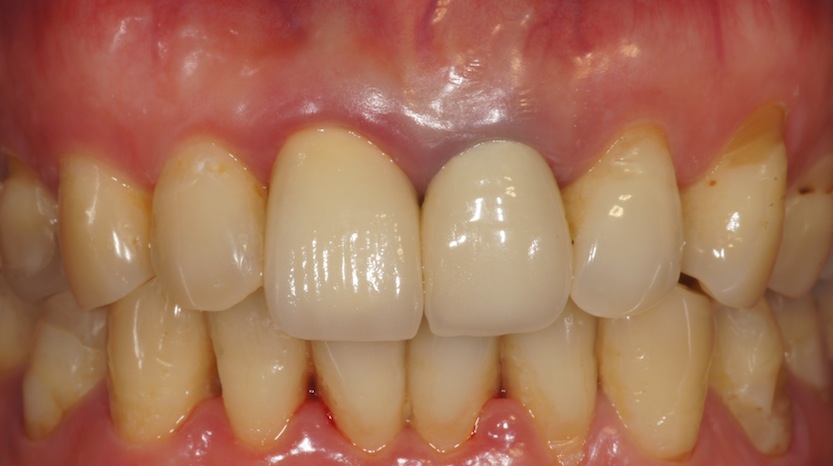
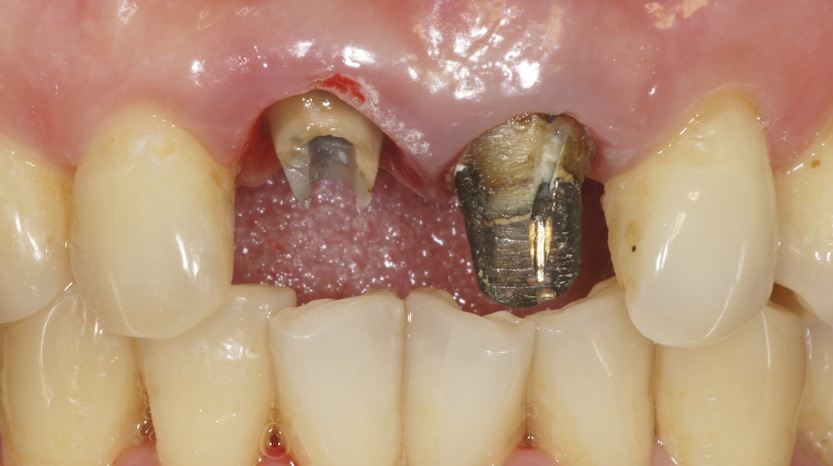
Dr. Johnny Chang decided to cut and shorten the roots and allowed soft tissue to heal over, which could facilitate a primary closure wound in the future GBR procedure:
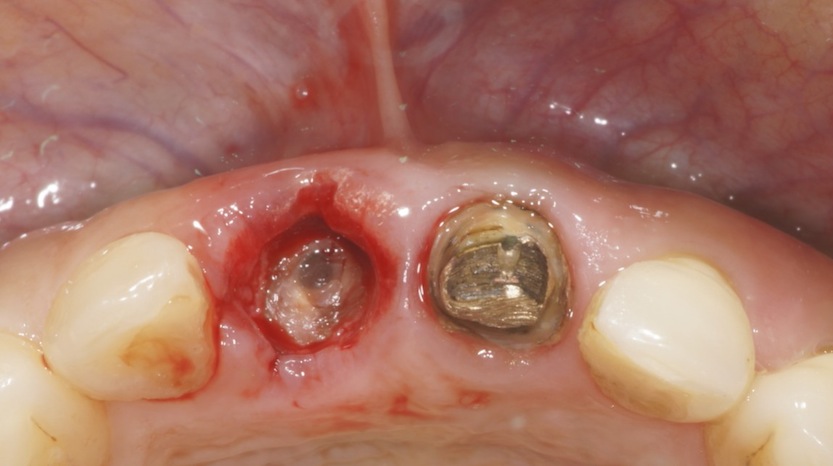
After two months, we can see that the labial bone plate has visibly resorbed: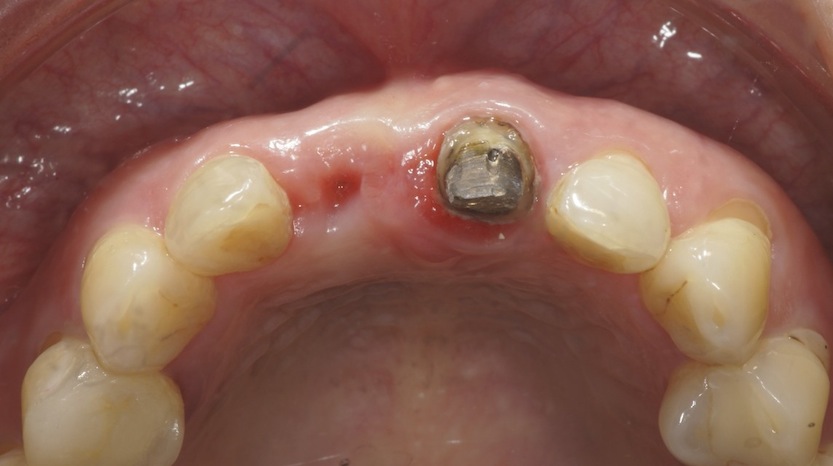
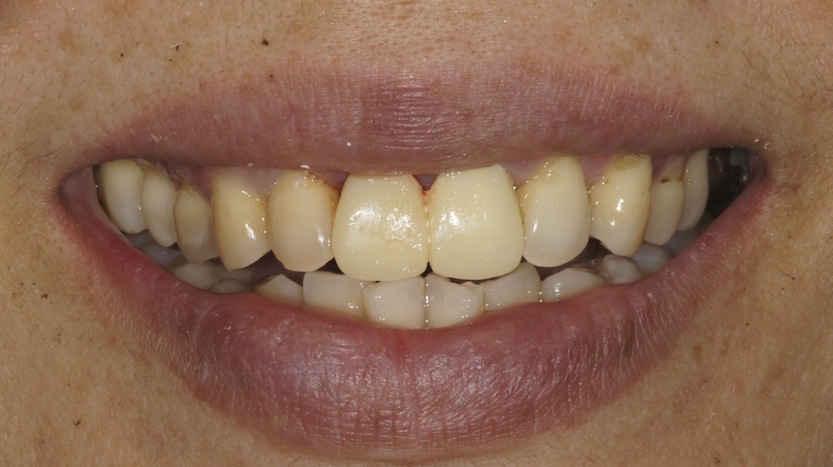
When the patient was with the perio-implant department, Dr. Johnny Chang, as usual, conducted his secret guided bone regeneration procedure, which is always forbidden to outsiders. With only a few leaked photographs, we could only be sure that he has combined GBR with CTG, but nothing else could be known.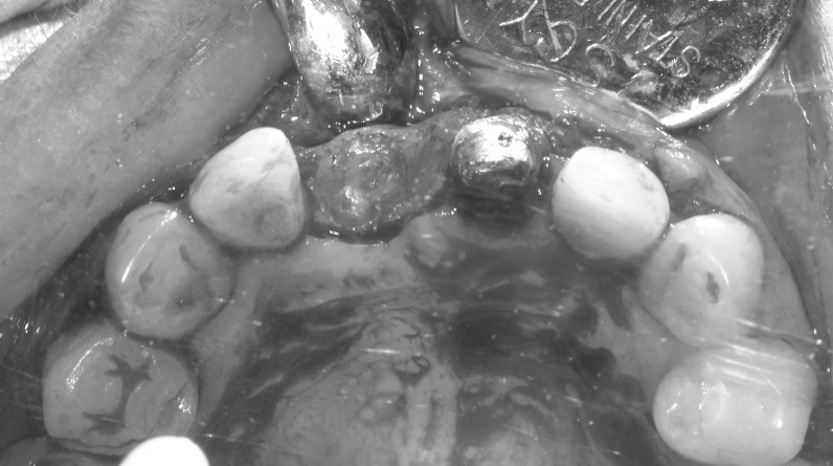
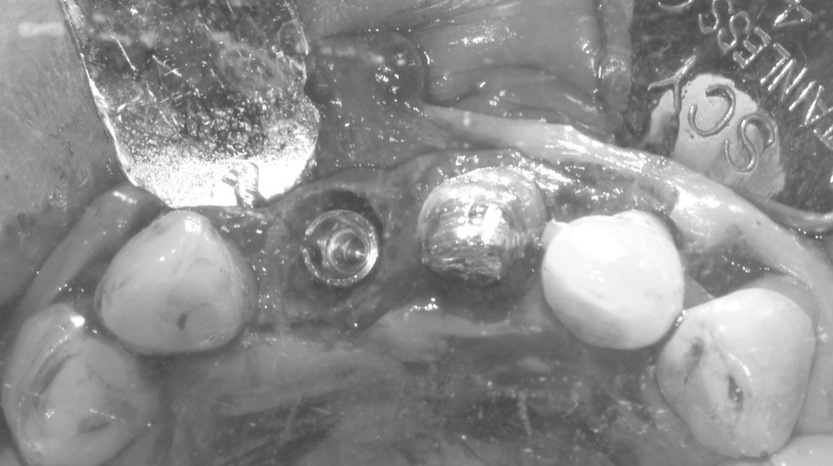
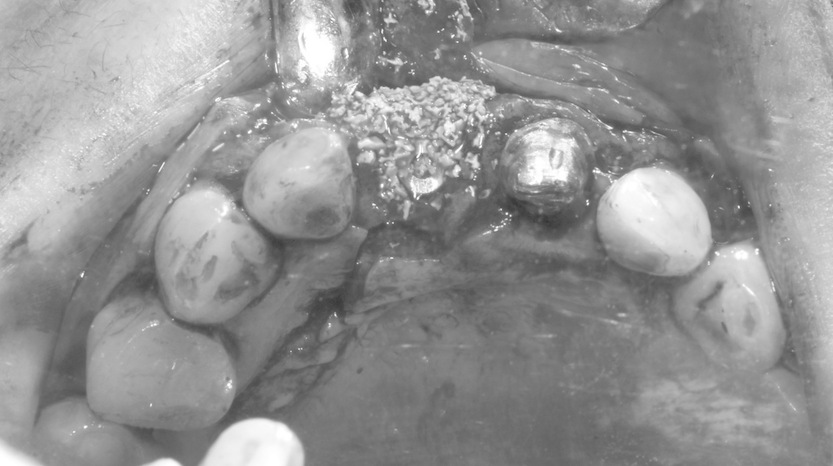

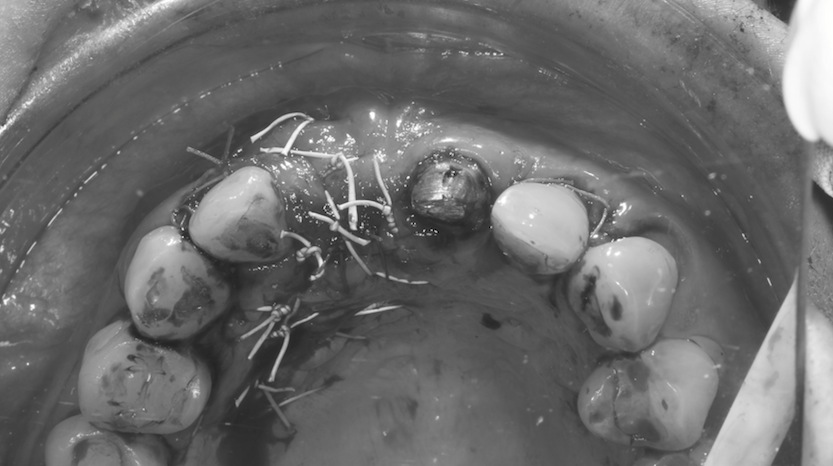
“Dr. Chang, sometimes it would be nice for me to know your techniques, I could help you better explain to the patients.” I asked him tentatively.
Dr. Johnny Chang replied righteously and said: “tof, I don’t want you to fall into the wrong path of being seduced by the devil of super GP principle someday, and become a super GP yourself, which is totally not suitable with you.”
What kind of excuse was that?
Alright, finally the patient returned to tof for restorations 4 months later. I tried to make quick temporary crowns without taking impression, so an immediate abutment from Nobel Biocare was used.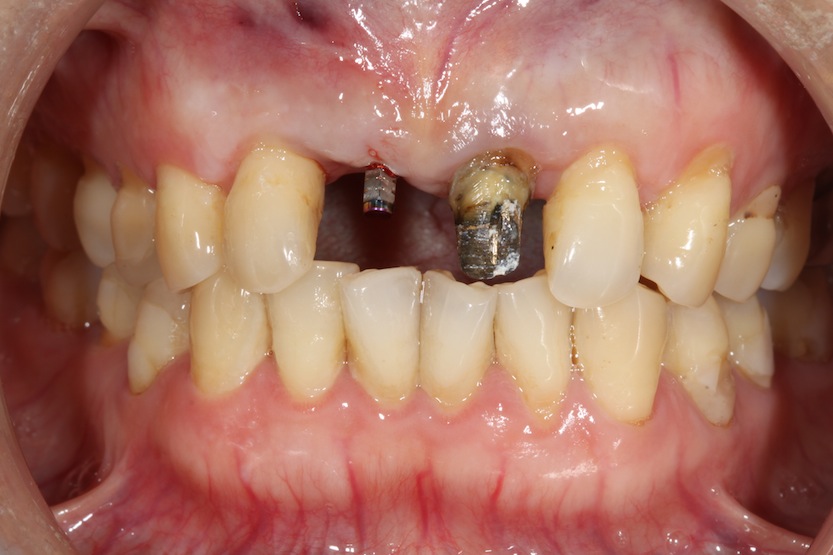
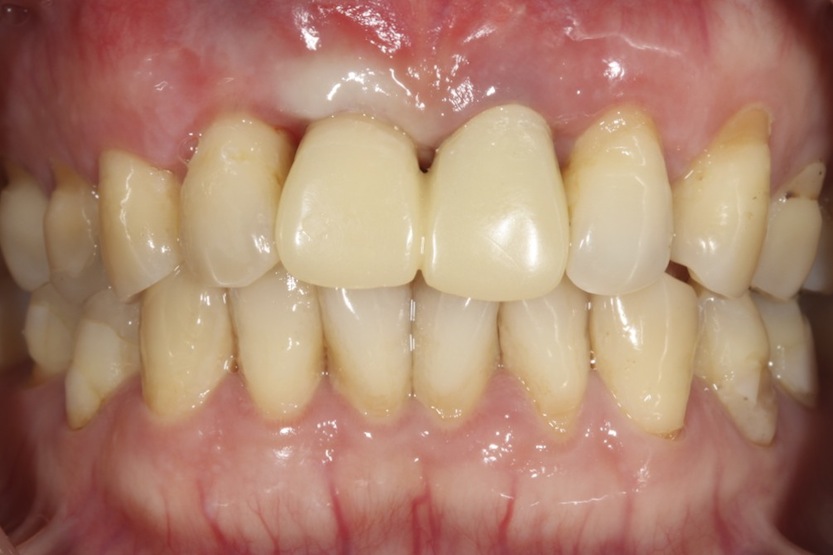
In previous articles about dental implant replacement of anterior teeth, I kept mentioning that when the first temporal crown is installed, the result should look like the above photo, which the gingiva line of the target tooth is more coronal than the contra-lateral tooth. This represents two things: first, my dental implant surgeon did a great job; second, the result is often great, beauty-wise.
Another 4 months later, the patient came back for further F/U. The gingival line of tooth #11 should move further apical compare to tooth #21’s.
This photo is taken right after adding flowable resin on abutment emergence profile; you can see gingiva of tooth #11 was still blanching.
Normally it would take time to level the gingiva line. In previous articles, tof always used incredible patience for this adjustment.
But there was one more problem in this case, which is the gingival zenith. Gingival zenith, simply say, is the highest point of the gingiva of a tooth if viewed from frontal aspect, and is normally symmetrical bilaterally. Its position locates a little bit distal to a tooth’s midline. The blue arrow in the below photo indicates the gingival zenith (the dotted line is the midline of the central incisor).
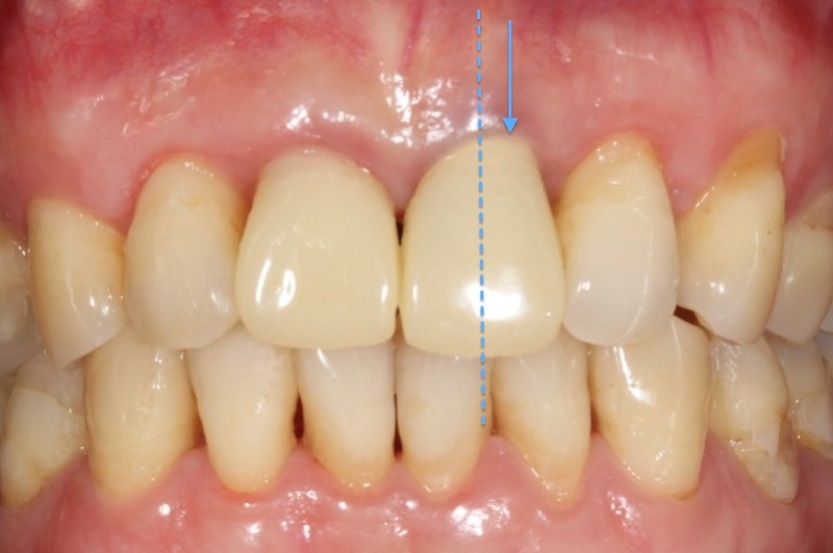
What determines the highest point of the gum is the contour of the abutment. If the contour is more protruding, then the corresponding gingival level will be more apical. Take this case as an example, the easiest step to take is to compare the level of protrusion of both tooth abutments occlusally. By looking at the occlusal view, we can imitate the most prominent point of the contour and then the technician would be able to capture and reproduce it.
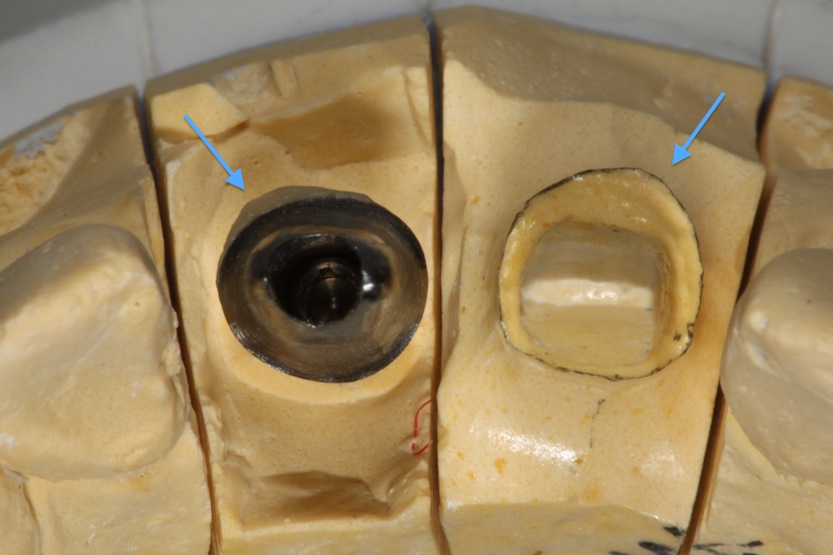

These are the zirconia abutments manufactured by the technician.
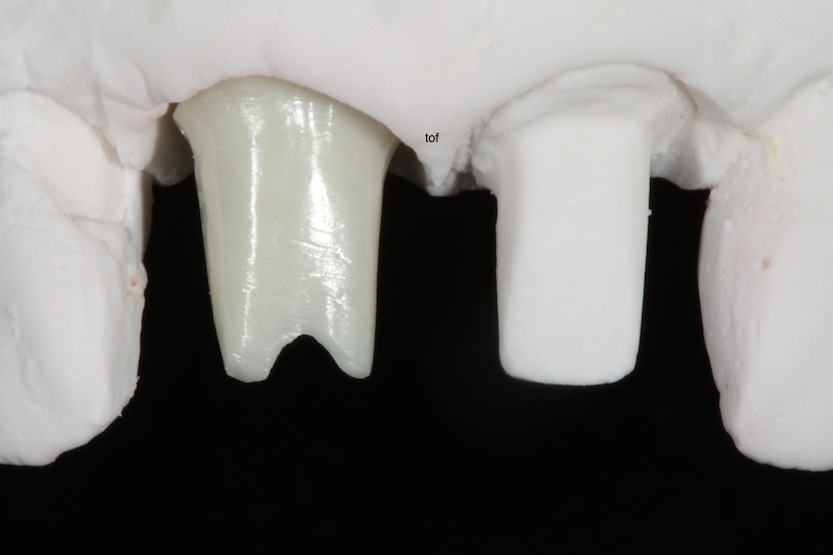
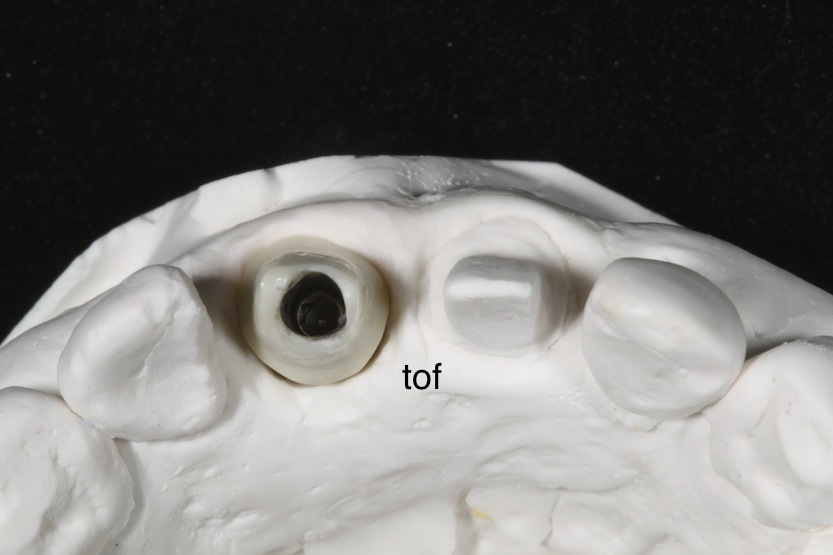

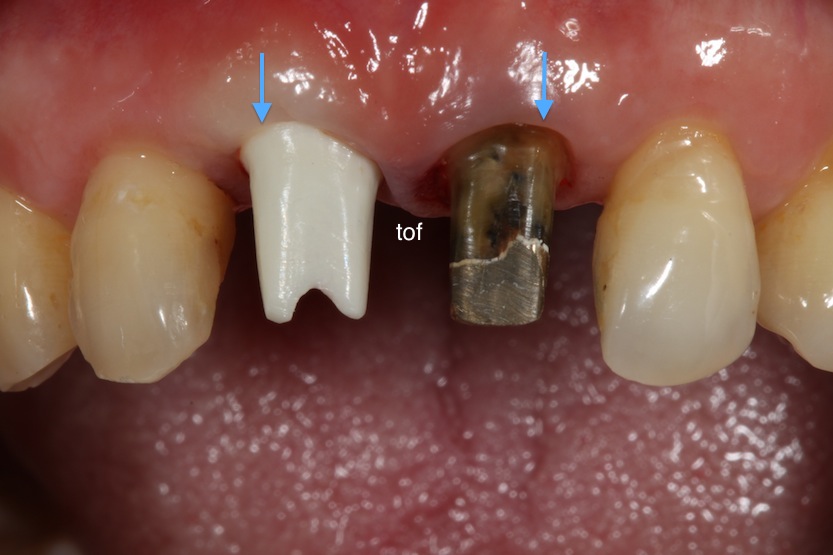
The blue arrows in the above photo indicate the final high point of gingival zenith. Now the two frontal incisors should be symmetrical.
Of course as usual, both finished crowns needed to go through shade verification procedure, like the photo below, and pass shade verification performed by the technician, in order to minimize the chance of clinical remakes due to shade mis-match.
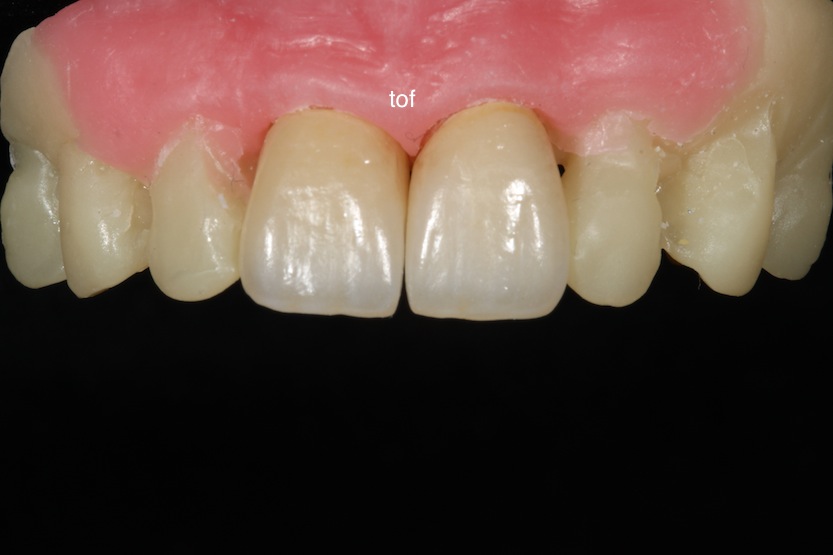
This is the final result: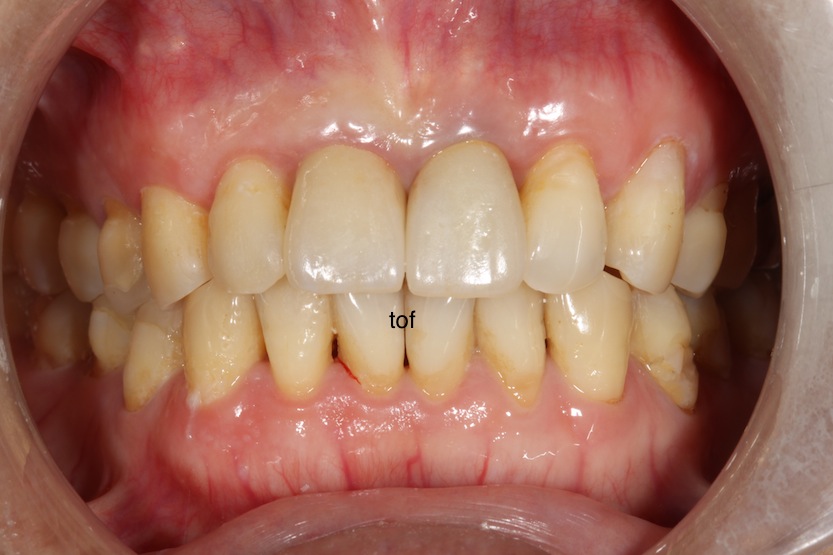
Here is the comparison of before and after the surgery:
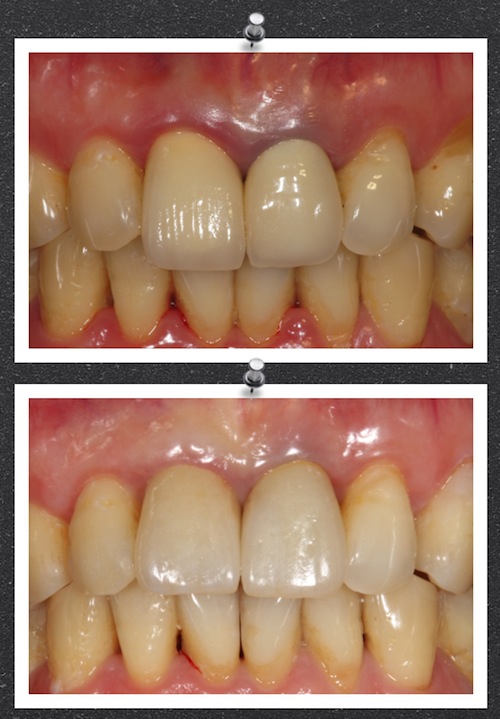
The GBR by the gifted hands of Dr. Johnny Chang also proved to be effective, which made up for the tissue loss caused by the contraction of labial plate.
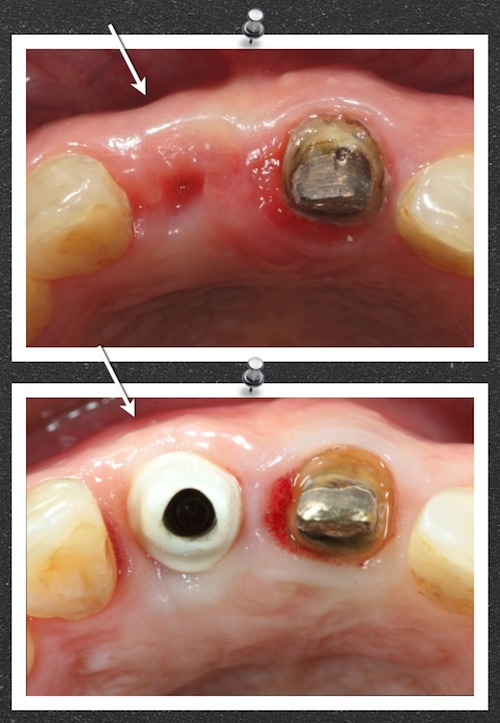
The aesthetics of dental implant on a single anterior crown are mostly controlled and decided by the perio-implant surgeon. The duty of a prosthodontist is to do everything to keep on their good works.
As to the super GP master, who is proficient at all traits like dental implants, orthodontics, full ceramic crowns and tooth-whitening, I can only hope it’s: “as real as it gets!”
Prosthodontist: tof
Perio-Implant surgeon: Dr. Johnny Chang
Shade verification cast and prostheses made by: Technician Chai-Lie Se of Taichung Creative Teeth Technology
Special assistant of Prosthodontic department: smallpen

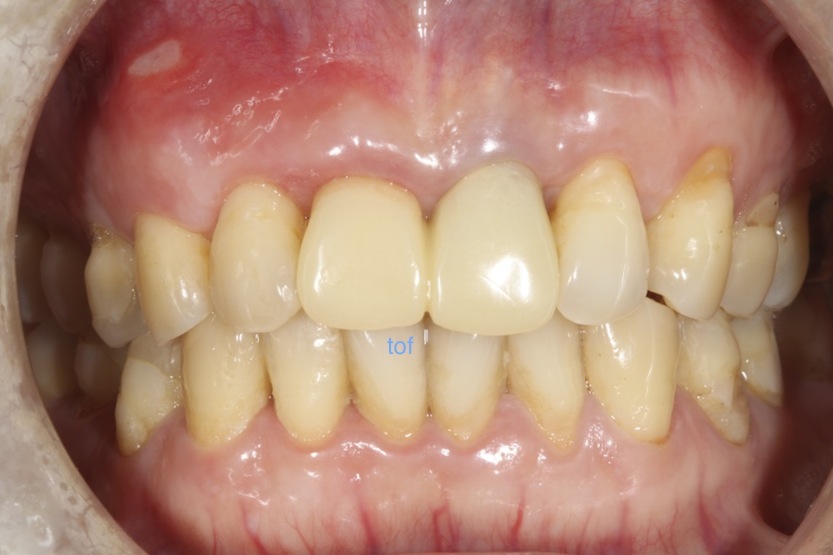
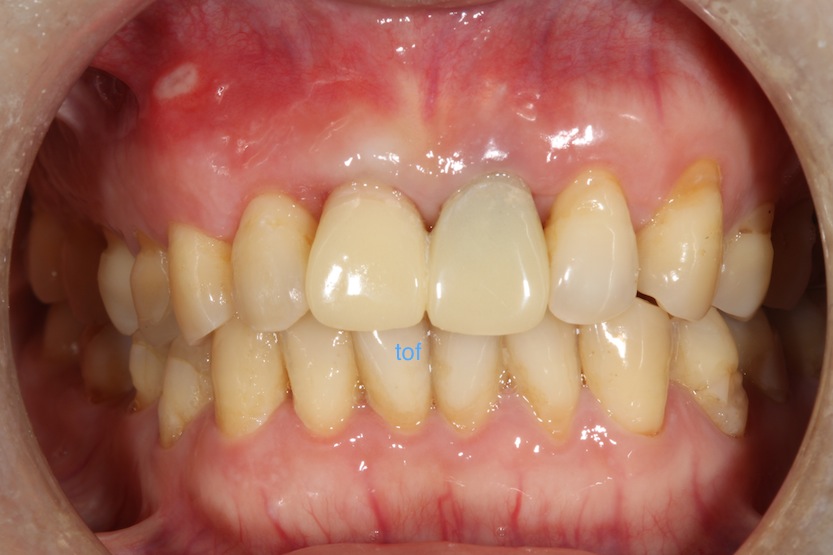
No responses yet